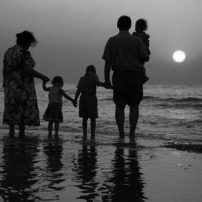
Adoption procedure regarding a child without the right to communicate with her biological parents. Violation of respect for family life
JUDGMENT
A.L. and others v. Norway (app. no. 45889/18) and E.M. and others v. Norway 20.01.2022 (app. no. 53471/17)
SUMMARY
The case concerned an alleged violation of the right to respect for family life of the applicant, who
was also acting on behalf of her daughter, on account of the latter’s subsequent adoption.
The Court pointed out that the fact that a child might benefit from being transferred into an
environment more conducive to her upbringing did not, per se, justify taking her away from her
biological parents.
The Court considered that it would have been desirable, before launching a procedure for the
adoption of the applicant’s daughter, for the courts to order an expert assessment of the mother’s
parental capacities, the child’s psychological functioning and developmental needs, and the
mother’s functional capacities for meeting those needs. The Court held that the arguments
advanced by the domestic courts to justify the adoption procedure had been insufficient. It noted
that no reasons had been given, apart from the time it would have taken for the mother to recover
her parental capacities, to explain how such a radical measure as adoption could actually be in the
child’s interests.
Under Article 46 (binding force and execution of judgments), the Court invited the authorities to
promptly reconsider the two applicants’ situation in the light of the present judgment and to
envisage arranging for contacts between them, taking account of the child’s situation and her best
interests.
This was a further finding against Italy of a violation of the right to respect for family life. Indeed,
over the last few years, several findings have been made against Italy for breaches of Article 8
concerning fostering and/or adoption procedures 2 or procedures concerning visiting rights.
PRINCIPAL FACTS
The first applicant is Ms D.M., a Cuban national who was born in 1982; the second applicant is her
daughter, N., who was born in 2012. They live in Brescia. Ms D.M. is acting on behalf of her
daughter.
The first applicant also has two other children who were born in 2002 and 2007 from her first
marriage, and with whom she has regular contact; they live with their grandparents. The second
applicant, N., was born of the relationship between Ms D.M. and A.P. That relationship ended in
2014. In 2015 Ms D.M. entered into a new relationship with M.S., who is her current husband, and
gave birth to a child in 2018. Ms D.M. and her husband look after this child on their own, without
any help or contribution from the public authorities.
On 18 February 2013 the first applicant applied to the welfare services for assistance on the grounds
that A.P. had abused her. She and her daughter were placed in a reception centre in Brescia for
about one year. On 22 February 2013 the public prosecutor’s office initiated a procedure in the
child’s interests. The court ordered the placement of the child and her mother in a family reception
centre.
On 14 January 2014 the court authorised the two applicants to return home, and ordered the
welfare services to provide support for the parents and educational assistance for the child. On 30
August 2014 the public prosecutor’s office invited the court to assess the two parents’ parental
capacities and to order the child to be taken into care. On 13 October 2014 the child and her mother
were accommodated in a family reception centre. The welfare services applied to the court for the
second applicant to be placed in a foster family.
On 3 September 2015 the public prosecutor’s office requested the suspension of the first applicant’s
parental authority over the second applicant, the opening of an adoption procedure and the child’s
placement in a foster family.
On 15 December 2015, by a decision which was enforceable immediately, the court declared the
second applicant available for adoption. It suspended both parents’ parental authority and ordered
the child’s fostering out to a couple pending her adoption. Considering that the situation was
irreversible and that the first applicant’s lifestyle was unstable, the court declared the second
applicant available for adoption. On 30 December 2015 the two applicants were split up.
On 10 March 2016 the first applicant appealed against that judgment. By judgment of 1 July 2016
the Brescia Court of Appeal dismissed the appeal and upheld the lower court’s judgment. The Court
of Appeal pointed out that even if it was possible that the couple might have recovered their
parental capacities in the future, it was nevertheless preferable, in the child’s immediate interests,
to declare her available for adoption. On 30 September 2016 the first applicant appealed on points
of law.
By judgment of 12 February 2019, deposited in the registry on 7 May 2019, the Court of Cassation
dismissed the appeal on points of law on the grounds that even though the declaration of availability
for adoption had failed to take account of the request for an expert assessment of the couple’s
parental capacities, that declaration had not been unlawful since there had been no “absolute lack
of reasoning” in the judgment in question. The Court of Cassation held that the judges had provided
reasons for rejecting the request for an expert assessment by stating that there had been a “long
period of observation of the behaviour of both parents” that the reasoning had been “autonomous”
and that it had been based on a full preliminary investigation.
Relying on Article 8 (right to respect for private and family life), the applicants alleged that the
reasons given by the domestic courts for declaring the daughter available for adoption did not
correspond to the “wholly exceptional circumstances” required for severing family ties. They
submitted that the Italian authorities had failed to honour their positive obligations as defined by
the Court’s case-law and that they had not taken all the action that could reasonably have been
expected of them to preserve their family ties and to strike a fair balance between the competing
interests at stake, having regard, in particuliar, to the fact that no psychological assessment had
been ordered for either of them.
THE DECISION OF THE COURT…
Article 8
The Court noted that in declaring the second applicant available for adoption the domestic courts
had relied on reports prepared by the welfare services and the reception centre staff, as well as on
interviews with the parties. The Court of Appeal and the Court of Cassation had considered that the
court had conducted a full and thorough investigation. The courts had held that the first applicant
had lacked parental capacities on account of her behaviour, and that she had an unstable lifestyle.
The court and the Court of Appeal had ruled that she was incapable of looking after her daughter.
The Court further noted that the Court of Appeal had established that it was possible that the couple
might recover their parental capacities with a great deal of time and effort, but that it was
nevertheless preferable, in the child’s interests, to declare her available for adoption.
The Court pointed out that the fact that a child might benefit from being transferred into an
environment more conducive to her upbringing did not justify, per se, taking her away from her
biological parents.
The Court observed that in the instant case it had not been demonstrated that the child had been
exposed to situations of violence or abuse, or to proven sexual abuse. The courts had not noted any
lack of emotional development, a worrying state of health, or psychological imbalance on the part of
the parents. The Court consequently doubted the adequacy of the facts on which the authorities had
relied in concluding that the first applicant had been unable to fulfil her parental duties, declaring
her lacking in parental capacities.
The Court noted that the decision to sever the family ties had not been preceded by any proper
assessment of the first applicant’s capacities for fulfilling her role as a parent or by any psychological
assessment, and that no attempt had been considered to preserve the family ties. The judicial
authorities had merely considered a number of difficulties, which could have been overcome by
means of targeted welfare assistance. No experts had been commissioned to evaluate the
applicant’s parental competences or her psychological profile. The Government referred to the
second applicant as a “victim” of sexual abuse, even though no criminal proceedings had ever been
conducted concerning the allegations of the welfare services.
The Court observed that the domestic courts had decided to declare the second applicant available
for adoption, thus removing her definitively and irremediably from her mother, despite the
existence of other less radical solutions.
The Court took the view that the absolute necessity of preserving the bonds between the applicant
and her daughter as far as possible had not been duly taken into consideration – bearing in mind
that the applicant had been in a vulnerable position, having regard to the domestic violence which
she had sustained and the assistance which she had requested from the welfare services to protect
her daughter.
The Court considered that the arguments advanced by the domestic courts to justify declaring the
second applicant available for adoption had been insufficient. The domestic authorities had not
convincingly demonstrated that despite the existence of less radical solutions, the impugned
measure had been the most appropriate option in line with the child’s higher interests.
Notwithstanding the domestic authorities’ margin of appreciation, therefore, the interference in the
applicant’s family life had been disproportionate to the legitimate aim pursued. The Court further
considered that the impugned procedure had not been accompanied by safeguards proportionate to
the seriousness of the interference and the interests at stake.
There had consequently been a violation of Article 8 of the Convention.
Article 46 (binding force and execution of judgments)
The Court invited the domestic authorities to reconsider, as soon as possible, the situation of the
two applicants in the light of the present judgment and to envisage arranging for contacts between
them, taking account of the child’s situation and her best interests, and to take all further
appropriate action in accordance with those interests.
The Court held that the most appropriate form of redress for a violation of Article 8 of the
Convention in such a case as the present one, where the domestic courts’ decision-making process
had led to the declaration of the second applicant’s availability for adoption, was to ensure that the
applicants were put in the position in which they would have been had this provision not been
disregarded.
Just satisfaction (Article 41)
The Court held that Italy was to pay the applicant 42,000 euros (EUR) in respect of non-pecuniary
damage and 10,000 EUR in respect of costs and expenses.


